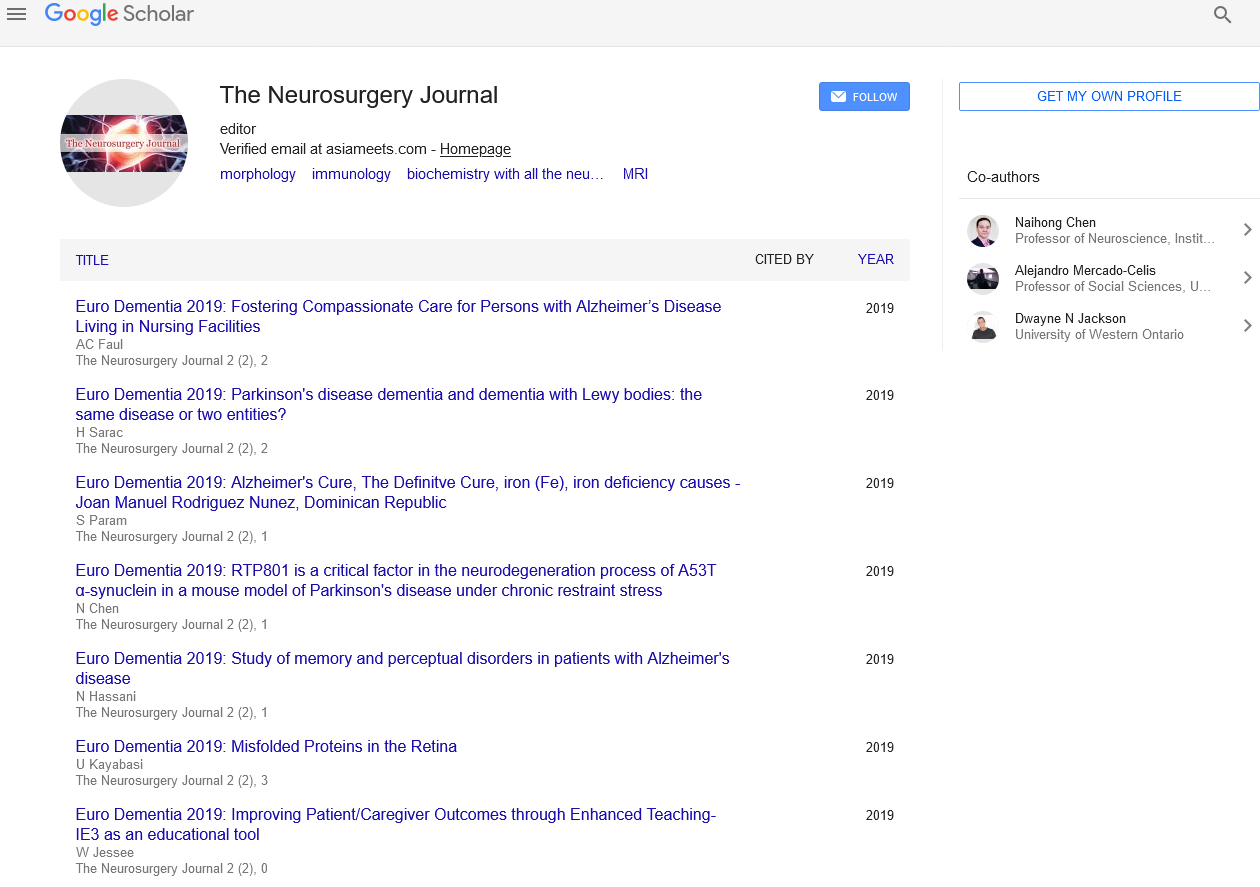Brief note on brachial plexus
Received: 08-Dec-2021 Accepted Date: Dec 22, 2021; Published: 29-Dec-2021
Citation: Askari M. Brief note on brachial plexus. Neurosurg. J. 2021;4(3):4.
This open-access article is distributed under the terms of the Creative Commons Attribution Non-Commercial License (CC BY-NC) (http://creativecommons.org/licenses/by-nc/4.0/), which permits reuse, distribution and reproduction of the article, provided that the original work is properly cited and the reuse is restricted to noncommercial purposes. For commercial reuse, contact reprints@pulsus.com
Description
The brachial plexus extends from neck to the armpits and is supplied to the upper limbs. This is a neural network that sends signals from the spinal cord to shoulders, arms, and hands. The nerves that support the arms leave the spine high in the neck and the person who supports the hands and fingers appears under the neck.
The brachial plexus is divided into roots, trunks, cords, sections and branches. There are five "terminal" branches and numerous other "anterior" or "collateral" branches that exit the nerve plexus at various points along their length. The five roots are the lower four cervical roots and the first thoracic nerve root after supplying the segment to the neck muscles. These roots join the three trunks of the upper, middle, and lower trunks. Each trunk is then divided into front and rear sections to form six sections as the anterior/posterior innervates the flexor and extensor groups: The anterior superior medial and inferior torso of the upper middle and lower torso. These six sections will be reorganized into three cords. The cord is named after its position relative to the axillary artery. The posterior cord is formed from the three posterior parts of the stem, the lateral cord is the anterior part of the upper body and middle trunk, and the medial cord is simply an extension of the anterior part of the lower body.
Brachial plexus damage occurs when nerves are stretched, compressed, or, in the worst case, torn from the spinal cord. Minor brachial plexus injuries known as stinger or burner are common in contact sports such as soccer. Babies can also suffer brachial plexus damage during childbirth. Other illnesses such as inflammation and tumors also affect the brachial plexus. The most serious injuries to the brachial plexus are usually caused by car or motorcycle accidents and such serious brachial plexus damage can paralyze the arm but surgery can help restore function. Brachial plexus damage in child is believed to be caused during delivery process. This injury can lead to incomplete sensory and/or motor function of the affected arm.
Signs and symptoms of brachial plexus injury vary widely depending on the severity and location of the injury. Normally, only one arm is affected. Avulsion: nerves are torn from attachment to the spinal cord and the drooping eyelids suggest detachment of the brachial plexus (Horner's syndrome). Rupture: The nerves are torn, but not at the base of the spinal cord. Neuroma: Scar tissue develops around the site of injury, exerting pressure on the injured nerve and preventing it from signaling muscles. Neurapraxia: The nerve is stretched and damaged, but not torn. Many damages to the brachial plexus heal in both children and adults, with little or permanent damage. Yet, some injuries can cause temporary or permanent problems like joint stiffness, pain, numbness, muscle wasting, permanent disability.
Conclusion
However, the time frame for surgical repair is an important element of recovery. Within 18 months, muscles that are not yet connected to nerves may weaken making this impossible.
Exfoliation and rupture damage cannot be completely healed unless surgical repair is done in a timely manner. In the case of neuromas and neurapraxia the potential for improvement varies. Most patients with neurapraxia have a 90%-100% recovery in function and a good prognosis for spontaneous recovery. If surgery is required, microsurgery can be used to repair the nerve within 3 months after the injury. Primary nerve repair is usually completed about 6 months after injury. The procedures are as follows:
1. Neurolysis-removes the stenotic scar tissue that surrounds the nerve. 2. Neuroma Excision: If the nerve tumor is large, the nerve tumor should be removed and the nerve reattached using end-to-end techniques or using nerve grafts. 3. Neurotization: This is commonly used when there is detaching. Donor nerves are used for repair.
The part of the root that is still connected to the spinal cord can be used as a donor for torn nerves.
4. Isolated Nerve Transfers: it can be performed up to 12-18 months of age, and adjacent healthy nerves attach to damaged nerves and become closer to the target muscle.





